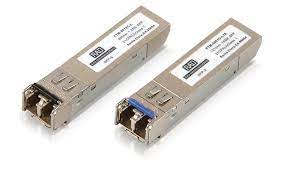Introduction:
In the rapidly evolving landscape of networking technologies, transceivers play a vital role in establishing reliable and high-speed connections. From Small Form-Factor Pluggable (SFP) to SFP+, and from Quad Small Form-Factor Pluggable 28 (QSFP28) to network switches, these components form the backbone of modern data communication systems. In this article, we will delve into the world of transceivers and network switches, understanding their features, benefits, and applications in today’s interconnected world.
Small Form-Factor Pluggable (SFP) Transceivers:
SFP transceivers revolutionized the networking industry by introducing a compact and hot-swappable form factor. These modules support both fiber optic and copper cables, enabling the transmission of data at various distances and speeds. The SFP transceivers offer multiple interfaces, such as Gigabit Ethernet, Fibre Channel, and SONET/SDH, making them versatile in their applications. They are commonly used in switches, routers, and network interface cards (NICs), allowing seamless connectivity and scalability.
SFP+ Transceivers:
Building upon the success of SFP transceivers, SFP+ modules were introduced to address the increasing demand for higher data rates. SFP+ supports data rates of up to 10 gigabits per second (Gbps) and is backward compatible with SFP ports. With advancements in technology, SFP+ transceivers provide enhanced performance, lower power consumption, and reduced latency. These modules are widely used in data centers and enterprise networks to support high-speed connections for applications like storage area networks (SANs), server clustering, and inter-switch links.
QSFP28 Transceivers:
As network requirements continue to grow, Quad Small Form-Factor Pluggable 28 (QSFP28) transceivers have emerged as a solution to meet the demand for even higher data rates. QSFP28 supports data rates of up to 100 Gbps and is backward compatible with QSFP+ ports. These transceivers offer flexibility through various optical and copper interfaces, such as Ethernet, InfiniBand, and Fibre Channel. With their compact design, QSFP28 modules enable efficient use of rack space in data centers and are commonly deployed for high-speed networking, cloud computing, and hyper-scale environments.
Network Switches:
Network switches serve as the central hubs for data transmission in modern networks. These devices facilitate the interconnection of multiple devices, such as computers, servers, and storage systems, within a local area network (LAN). Switches receive incoming data packets and forward them to their intended destinations, ensuring efficient and secure communication. They are equipped with a varying number of ports, ranging from a few to several hundred, allowing seamless connectivity and data exchange between network devices. Switches support various speeds, including Fast Ethernet, Gigabit Ethernet, and 10-Gigabit Ethernet, depending on the requirements of the network infrastructure.
Conclusion:
Transceivers and network switches form the foundation of today’s interconnected world. From SFP and SFP+ modules providing flexibility and scalability to QSFP28 transceivers catering to the need for higher data rates, these components empower modern data communication systems. Network switches, on the other hand, play a crucial role in interconnecting devices within a network, ensuring efficient data transfer and communication. As technology advances, we can expect further innovations in the transceiver and switch designs, enabling faster and more reliable networks to meet the growing demands of our interconnected society


























